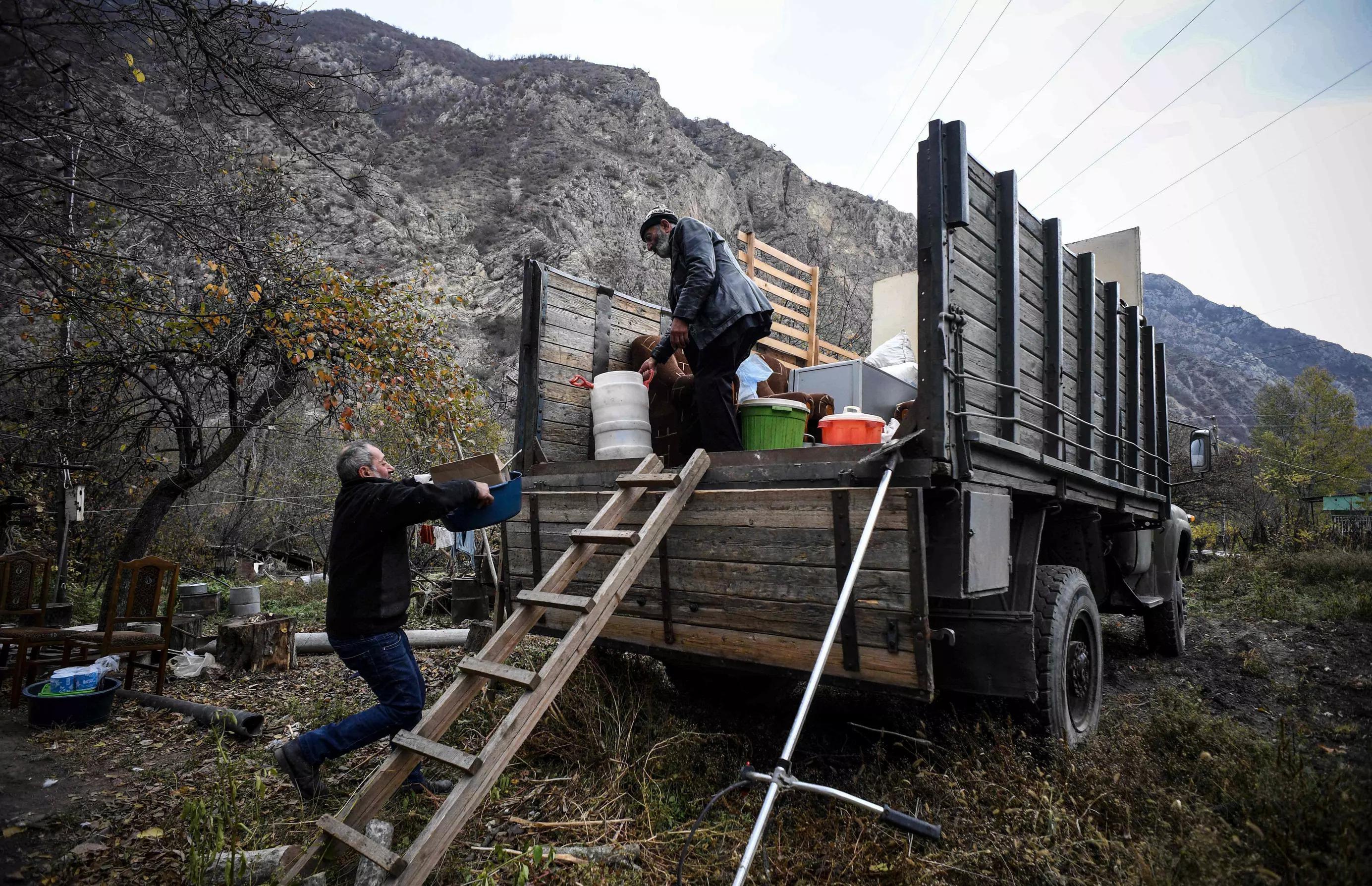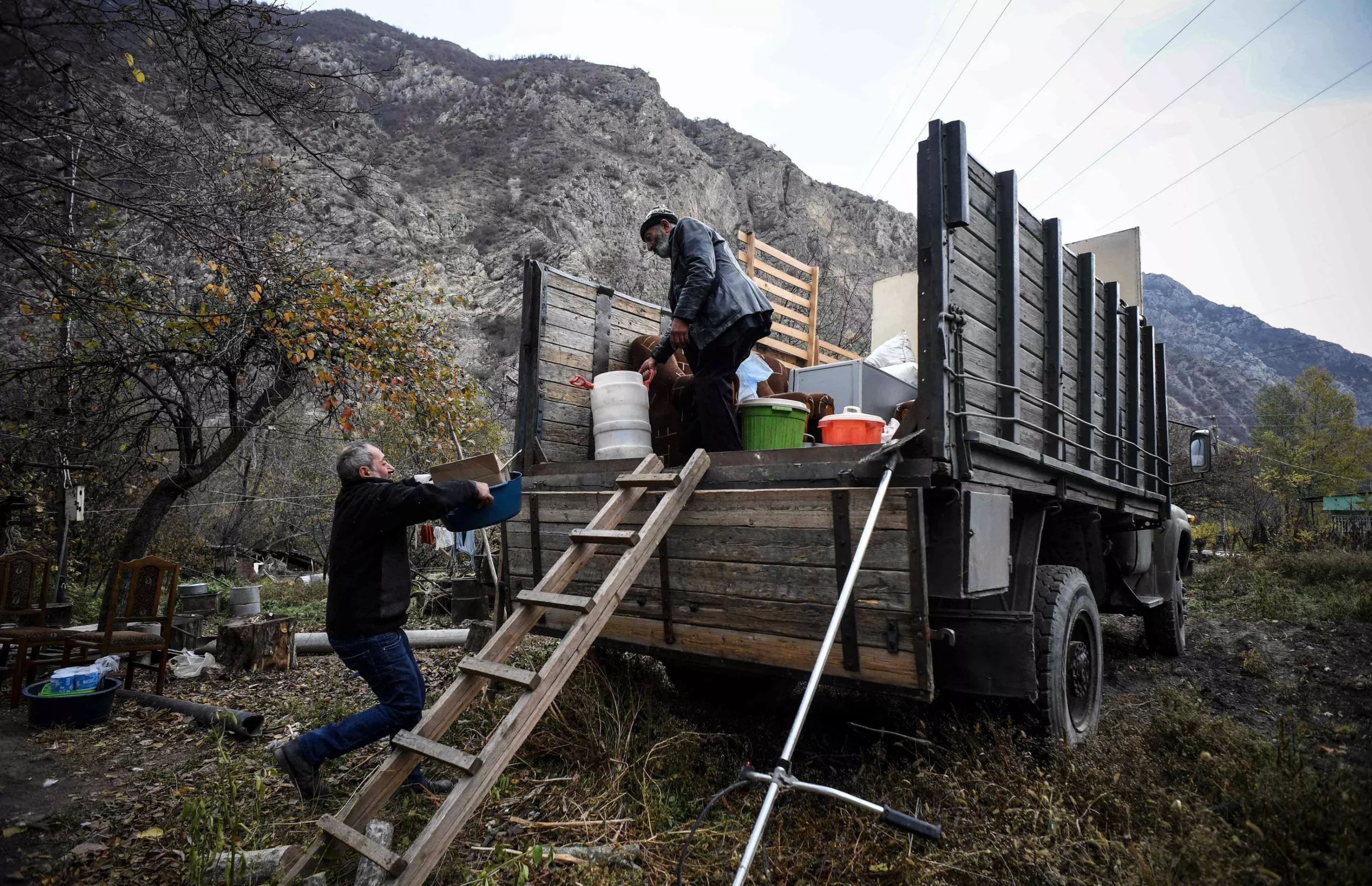
The Caucasus region is a weathered vastness in eastern Europe bestriding the Black Sea and the Caspian Sea. It consists of expanses of southern Russia and the independent nations of Georgia, Armenia, and Azerbaijan — all portions of the erstwhile Union of Soviet Socialist Republics (USSR). While physically this territory lies between Europe, Asia, Russia and the Middle East, ethno-religiously it is on the borderlines where Islam encounters Christianity. Doctrinally, it is the frontier where not-too-perfect democracy bumps into undiluted authoritarianism.
Armenia is overwhelmingly Christian, with 97 per cent of the people following the Armenian apostolic faith, one of the oldest Christian churches established in the first century CE. On the flip side, Azerbaijan is 90 six per cent Muslim, with 65 per cent of the people observing Shia Islam and the rest being denominationally Sunni. Four-fifths of Georgia is also Orthodox Christian by faith.
For centuries, the Nagorno-Karabakh region has served as a frontier between three major civilisational strains represented by the Orthodox Christian Russian Empire, the Sunni Ottoman Empire, and the Shiite Iranian Empire. The region an ethnically Armenian enclave has, therefore, been a focal point of contention for centuries.
The discord between Armenia and Azerbaijan over Nagorno-Karabakh thus is deeply entrenched in history. In 1805, the region conclusively became part of the Russian empire under the auspices of the Treaty of Kurekchay. The collapse of the Russian Empire in 1917 and subsequent nationalistic movements led to violent clashes over this strategically significant territory. During the Bolshevik revolution in erstwhile Russia, it endeavored to declare freedom but was occupied by the Red Army and integrated into the newly constituted Union of Soviet Socialist Republics.
During the Soviet era, Nagorno-Karabakh was officially designated as an autonomous oblast within the Azerbaijan Soviet Socialist Republic with a fair amount of regional autonomy despite its predominantly Armenian population. This administrative decision sowed the seeds of future discord by leaving the Armenian majority feeling politically marginalised. Although tensions were somewhat managed under Soviet rule, they never fully dissipated.
Following the dismemberment of the Soviet Union, as Armenia and Azerbaijan declared independence, the status of Nagorno-Karabakh became a flashpoint once again. In 1988, the regional council of Nagorno-Karabakh voted to unite with Armenia, igniting violent clashes and leading to a full-scale war that lasted from 1991 to 1994. The war ended with a ceasefire that left Armenia in control of Nagorno-Karabakh.
Recent developments: The escalation in the Nagorno-Karabakh region in September 2023 once again plunged the frozen Armenia-Azerbaijan conflict into a fresh cataclysmic phase. The crisis was ignited by Azerbaijan impeding the Lachin Corridor in December 2022, the only road connecting Armenia to the region. The blockade led to severe shortages of essential supplies in Nagorno-Karabakh. Azerbaijan ostensibly attempted to rationalise the blockade blaming Armenia for using the corridor to transport military supplies, a claim that Armenia denied. The situation was further exacerbated by the reduced presence of Russian peacekeepers, as Moscow’s focus shifted to its conflict with Ukraine.
The situation reached a critical juncture on September 19, 2023, when Azerbaijani forces launched an offensive. This action culminated in the occupation of the Armenian-majority Nagorno-Karabakh by Azerbaijan, marking the end of its 30 years of de facto independence and triggering a mass exodus of over 100,000 ethnic Armenians within a week. Once considered a “frozen” dispute, the conflict has now drawn renewed international attention, with significant local, regional, and global implications.
Regional and global involvement: The Armenia-Azerbaijan conflict has drawn significant involvement from regional and global powers, each with its own strategic interests. Turkey, a staunch ally of Azerbaijan, has played a crucial role by providing military support and political backing. This includes the supply of advanced weaponry and drones, enhancing Azerbaijan’s offensive capabilities. Turkey’s involvement aligns with its strategic interests in asserting influence in the South Caucasus and countering Armenian influence.
Russia, traditionally a balancing force in the region, maintains a complex relationship with both Armenia and Azerbaijan. As a member of the Collective Security Treaty Organization (CSTO), Russia has a mutual defence obligation with Armenia but also engages in significant economic and military cooperation with Azerbaijan. This dual approach allows Russia to retain leverage over both nations while safeguarding its strategic interests in the Caucasus.
Iran, sharing borders with both countries, has taken a cautious stance, advocating for a peaceful resolution while being concerned about the conflict’s impact on its regional security and its significant Azeri minority population. Iran’s involvement has primarily been through diplomatic efforts aimed at de-escalation and preventing external powers from exacerbating the conflict.
Azerbaijan has deepened its strategic ties with China, becoming its second partner in the South Caucasus after Georgia. This partnership, formalised with a joint declaration, builds on growing economic cooperation since 2015, especially within China’s Belt and Road Initiative (BRI). China’s interest in the region has intensified, aiming to establish new trade routes bypassing Russia. Recent agreements with China and Iran further align Baku more closely with Russia, challenging Western interests in the region.
India needs to be watchful about the developments in the Caucuses given the recent churn in the international geostrategic landscape. The conflicts raging in Europe, Middle East and the tensions in Asia are roiling the global order.
Mediation efforts and peace prospects: Mediation efforts to resolve the conflict have been ongoing since the early 1990s, with the Organisation for Security and Co-operation in Europe (OSCE)’s Minsk Group, co-chaired by Russia, France, and the United States, playing a central role. Despite numerous meetings and proposals, a lasting peace has remained elusive due to the intransigence of both sides, the complex geopolitical interests of regional powers, and the deep-rooted mistrust between Armenia and Azerbaijan.
Recently, Russian President Vladimir Putin reaffirmed Moscow’s commitment to mediating peace negotiations, despite the ongoing war in Ukraine. However, the recent ceasefire has not addressed core issues such as the status of Nagorno-Karabakh and the rights of displaced persons, leaving the prospects for lasting peace uncertain.
In a notable development, Armenia has agreed to return several villages to Azerbaijan. These villages were occupied by Armenia during the First Karabakh War, and are crucial for Armenia’s trade routes. As the two countries edge closer to a peace agreement, the resolution of the Nagorno-Karabakh conflict remains a complex and ongoing challenge with significant implications for regional stability and international relations.
